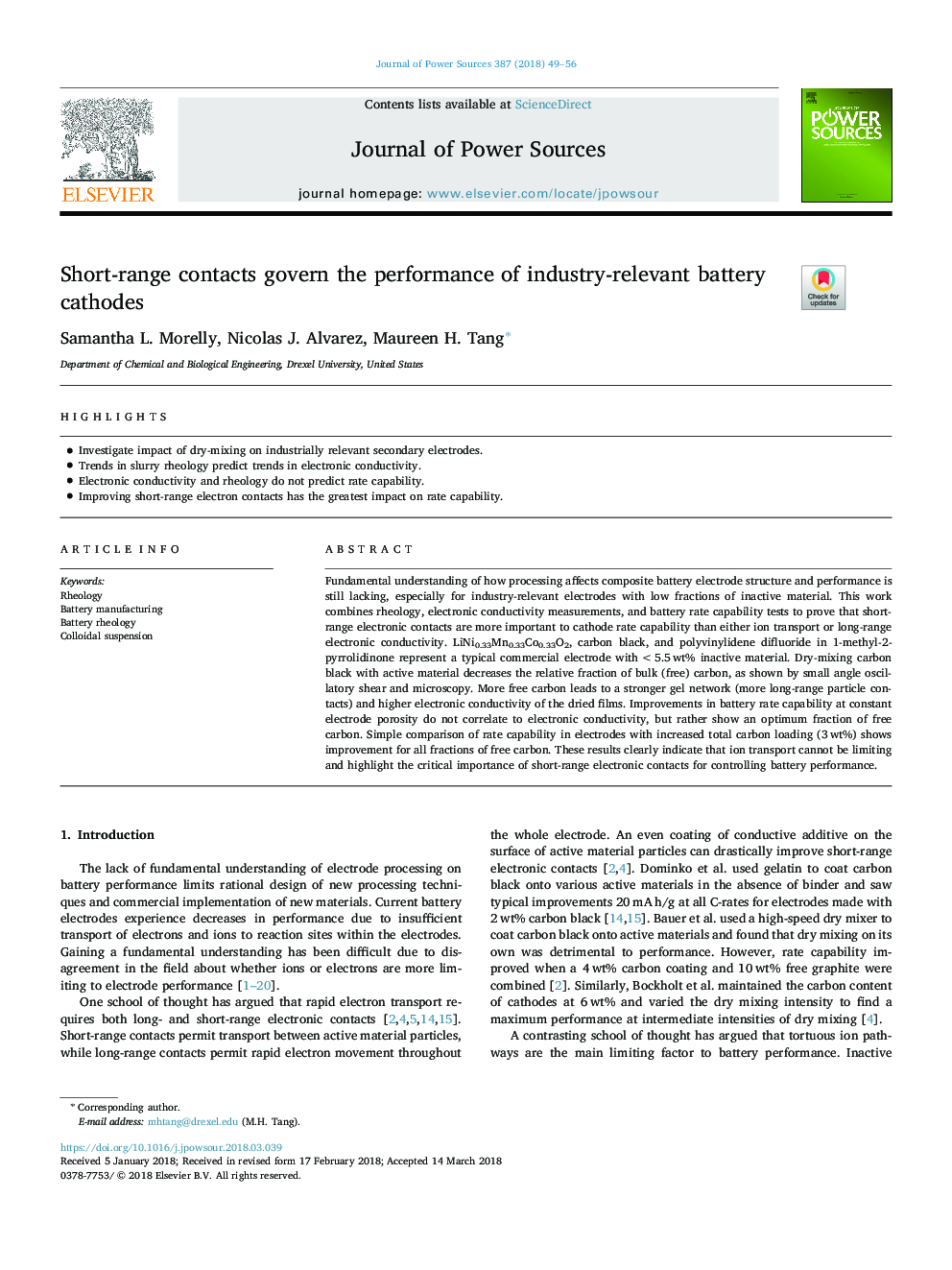| Article ID | Journal | Published Year | Pages | File Type |
|---|---|---|---|---|
| 7725236 | Journal of Power Sources | 2018 | 8 Pages |
Abstract
Fundamental understanding of how processing affects composite battery electrode structure and performance is still lacking, especially for industry-relevant electrodes with low fractions of inactive material. This work combines rheology, electronic conductivity measurements, and battery rate capability tests to prove that short-range electronic contacts are more important to cathode rate capability than either ion transport or long-range electronic conductivity. LiNi0.33Mn0.33Co0.33O2, carbon black, and polyvinylidene difluoride in 1-methyl-2-pyrrolidinone represent a typical commercial electrode with <5.5â¯wt% inactive material. Dry-mixing carbon black with active material decreases the relative fraction of bulk (free) carbon, as shown by small angle oscillatory shear and microscopy. More free carbon leads to a stronger gel network (more long-range particle contacts) and higher electronic conductivity of the dried films. Improvements in battery rate capability at constant electrode porosity do not correlate to electronic conductivity, but rather show an optimum fraction of free carbon. Simple comparison of rate capability in electrodes with increased total carbon loading (3â¯wt%) shows improvement for all fractions of free carbon. These results clearly indicate that ion transport cannot be limiting and highlight the critical importance of short-range electronic contacts for controlling battery performance.
Related Topics
Physical Sciences and Engineering
Chemistry
Electrochemistry
Authors
Samantha L. Morelly, Nicolas J. Alvarez, Maureen H. Tang,
